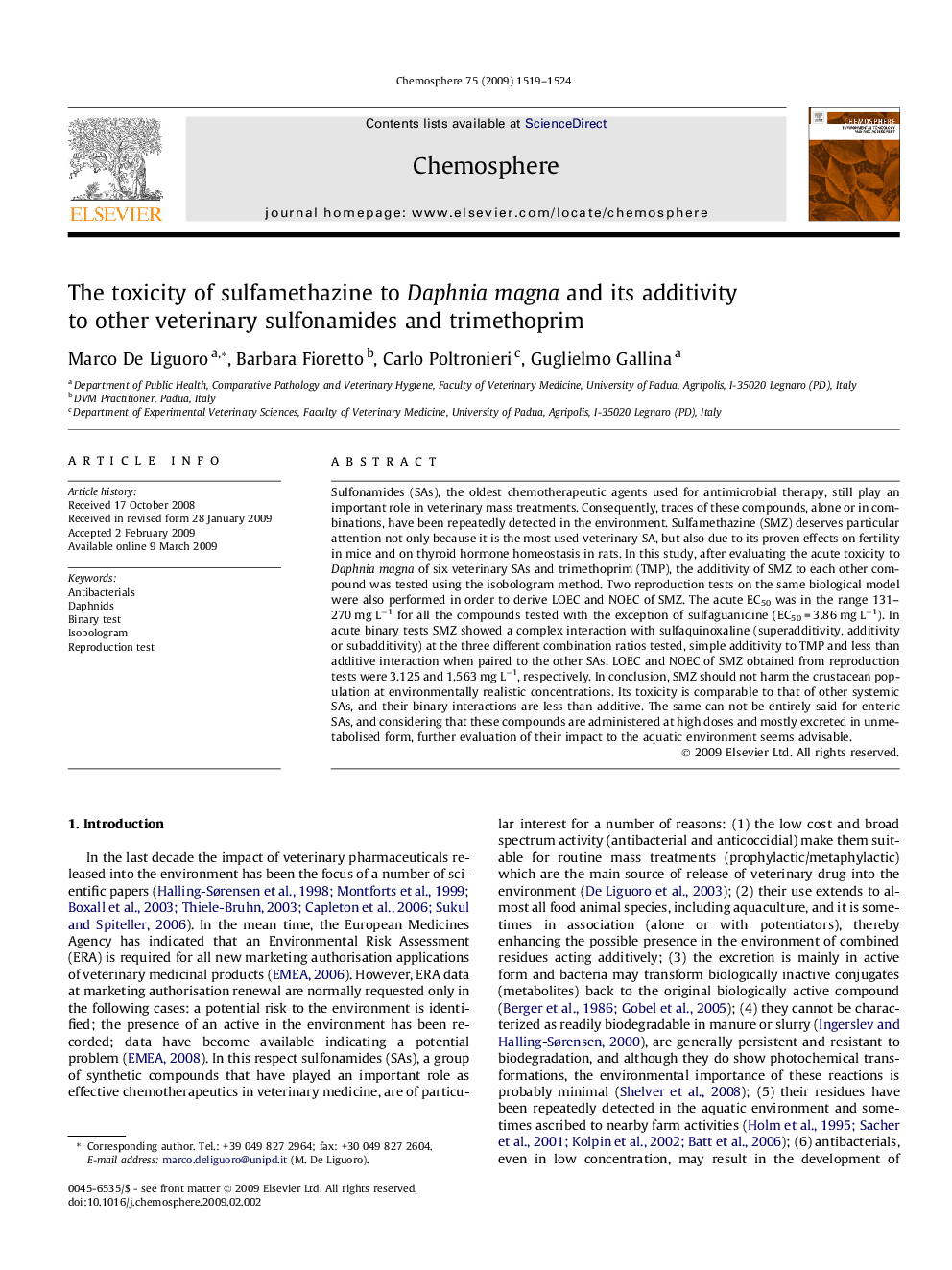| کد مقاله | کد نشریه | سال انتشار | مقاله انگلیسی | نسخه تمام متن |
|---|---|---|---|---|
| 4412955 | 1307658 | 2009 | 6 صفحه PDF | دانلود رایگان |

Sulfonamides (SAs), the oldest chemotherapeutic agents used for antimicrobial therapy, still play an important role in veterinary mass treatments. Consequently, traces of these compounds, alone or in combinations, have been repeatedly detected in the environment. Sulfamethazine (SMZ) deserves particular attention not only because it is the most used veterinary SA, but also due to its proven effects on fertility in mice and on thyroid hormone homeostasis in rats. In this study, after evaluating the acute toxicity to Daphnia magna of six veterinary SAs and trimethoprim (TMP), the additivity of SMZ to each other compound was tested using the isobologram method. Two reproduction tests on the same biological model were also performed in order to derive LOEC and NOEC of SMZ. The acute EC50 was in the range 131–270 mg L−1 for all the compounds tested with the exception of sulfaguanidine (EC50 = 3.86 mg L−1). In acute binary tests SMZ showed a complex interaction with sulfaquinoxaline (superadditivity, additivity or subadditivity) at the three different combination ratios tested, simple additivity to TMP and less than additive interaction when paired to the other SAs. LOEC and NOEC of SMZ obtained from reproduction tests were 3.125 and 1.563 mg L−1, respectively. In conclusion, SMZ should not harm the crustacean population at environmentally realistic concentrations. Its toxicity is comparable to that of other systemic SAs, and their binary interactions are less than additive. The same can not be entirely said for enteric SAs, and considering that these compounds are administered at high doses and mostly excreted in unmetabolised form, further evaluation of their impact to the aquatic environment seems advisable.
Journal: Chemosphere - Volume 75, Issue 11, June 2009, Pages 1519–1524